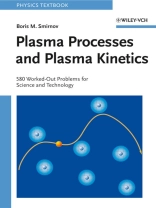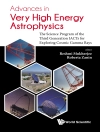This problems supplement to plasma physics textbooks covers plasma theory for both science and technology.
Written by a renowned plasma scientist, experienced book author and skilled teacher, it treats all aspects of plasma theory in no fewer than 520 very detailed worked-out problems. With this systematic collection the reader will gain a sound understanding of plasma physics in all fields, from fusion and astrophysics to surface treatment. The book also includes the transport of particles as well as radiation in plasmas, and while designed for graduate students and young researchers, it can equally serve as a reference.
Cuprins
1 Distributions and Equilibria for Particle Ensembles
2 Elementary Processes in Plasma
3 Slow Atomic Collisions
4 Collisions Involving Electrons
5 Elementary Radiative Processes in Excited Gases
6 Boltzmann Kinetic Equation
7 Transport and Kinetics of Electrons in Gases in External Fields
8 Transport of Ions and Atoms in Gases and Plasmas
9 Kinetics and Radiative Transport of Excitations in Gases
10 Processes in Photoresonant Plasma
11 Waves in Plasma and Electron Beams
12 Relaxation Processes and Processes with Strong Interaction in Plasma
13 Cluster Plasma
14 Aeronomy Processes
15 Gas Discharge Plasmas
16 Appendices
Despre autor
Boris M. Smirnov received his Ph D in physics from Leningrad State University in 1968. After working in different research positions, he finally accepted a post as head of one of the divisions of the Institute for High Temperatures at the Russian Academy of Sciences in Moscow in 1986. Professor Smirnov is the author and co-author of approximately 30 books, among them ‘Physics of Ionized Gases’, published in 2001, and ‘Principles of Statistical Physics’ published in 2006 by Wiley-VCH, as well as 300 research articles in plasma physics, atomic physics, and atomic clusters. He is Vice Chairman of the National Council for Low Temperature Plasma and Chairman of a Section on Elementary Processes in Plasma. Professor Smirnov’s research interests focus on Plasma Physics and Technology, Cluster Physics, Fractal Systems and Nanostructures.












